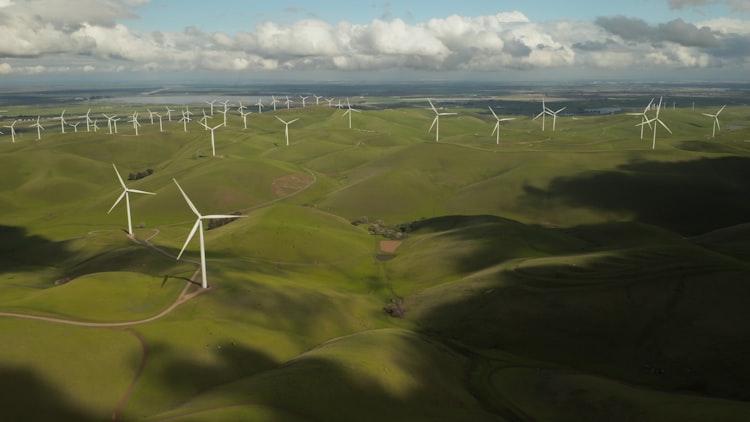AWS Regions, AZs & Edge Locations

Table Of Contents
- Introduction
- AWS Global Infrastructure
- AWS Regions
- AWS Multi-Region Strategy
- AWS Availability Zones
- The Difference Between AWS Region and AWS Availability Zones
- Edge Locations
- Summary
- References
Introduction
The AWS global infrastructure consists of numerous data centers that house all servers, storage units, and networking hardware from various geographical locations worldwide.
As more data centers are constructed, AWS's worldwide footprint grows, increasing the number of regions available to its clients.
Because of this, we'll examine AWS Regions and AZs (Availability Zones) and introduce edge locations.
Let's get started, then.
AWS Global Infrastructure
See the AWS Regions globally using the screenshot below at the time of this writing.

These networks of data centers are strategically located globally and designed to support the vast collection of cloud computing services offered by AWS. Thus, it forms the backbone of AWS's cloud infrastructure and delivers reliable, scalable, and high-performance services to millions of customers globally.
It consists of regions, availability zones, and edge locations.
Let's discuss them one by one.
AWS Regions
Each Region is a distinct geographic area with a variety of data centers. It looks like they are isolated, and they are. Again, they are isolated from each other to provide fault tolerance and ensure data sovereignty.
Note: Fault tolerance is the ability of an infrastructure to continue operating correctly even in the presence of failures.
Moreover, within a given region, these data centers are constructed to be a small group of the larger cluster logically and physically separated within 100 kilometers (km) of one another.
Note: These logical and physical separation groups of data centers are called Availability Zones (AZs).
Furthermore, not all AWS services are available in every Region. However, AWS is expanding its service availability across regions.
That's why reviewing the AWS Regional Services List is essential to notice or at least know which services are available to the organization's desired Region.
AWS Multi-Region Strategy
The purpose of having many regions across the globe is to allow AWS to attract customers in those locations further to sign up for its services.
Let's see the benefits of AWS's multi-region strategy:
- Find infrastructure resources that are more accessible to your end users so you may host your application there and improve user experience (UX) by reducing network latency.
- Determine the infrastructure to follow strict data sovereignty and compliance rules within political and national boundaries.
- Separate resource groups from one another so you can carry out any failover or DR (Disaster Recovery). Please see the sample screenshot below.

Note: Many services are based on regions, meaning before you deploy a resource using a specific service organization needs to choose the region in which service will be deployed.
AWS Availability Zones
As described in the previous section, the logical and physical grouping of data centers inside an AWS Region is known as an AZs (Availability Zones).
Moreover, the main objective of AZs is to guarantee that the others may continue to run independently even if one AZ experiences an outage. High-speed, low-latency networks link the availability zones.

Note: To reduce the possibility of simultaneous failures, AZs are physically separated from one another, frequently placed in different buildings or even miles away.
Furthermore, businesses can achieve resilience and fault tolerance by installing numerous AZs. To minimize downtime and maintain service continuity, an application can be designed to automatically failover to another AZ if one becomes unavailable.
The Difference Between AWS Region and AWS Availability Zones
Ok, you might be confused now. Let's try to compare the two of what it is.
- An AWS Region is a geographical area in which AWS has established multiple data centers. In contrast, AWS AZs is a distinct data center within a region having an isolated facility equipped with redundant power, networking, and cooling infrastructure.

- An AWS Region's main objective is to address data sovereignty, compliance, and latency concerns. In contrast, AWS AZs within a region are designed to provide fault tolerance and high availability.
Edge Locations
We've already seen the AWS Regions and AZs, but edge locations are another hosting option that AWS provides. The high-speed networking components, storage systems, and server infrastructure are also in edge locations.
Note: AWS edge computing services enable data to be processed and examined closest to the end user.
An excellent example of edge location. Let's say the organization's resources and files live somewhere in London, but the organization has a client in Sydney. Your organization can cache frequently accessed files on servers close to those users in Sydney. As a result, the time it takes to download those frequently accessed files is drastically reduced, improving the UX significantly.
Amazon CloudFront
Amazon CloudFront edge locations are a part of Amazon Web Services global content delivery network (CDN) called Amazon CloudFront; it is a service that is a prominent client of edge location services.
This CDN service will assist you in setting up distribution channels for your content. Depending on your organization's configuration, the distribution points are produced at these edge locations in each Region. The edge point nearest to the end users attempting to access your content is where your material is cached.

Please remember that AWS AZs are geographically isolated data centers inside AWS regions and are distinct from AWS Edge Locations. Instead of accommodating computational resources or databases, edge locations are usually smaller but built to handle content delivery and caching.
Summary
In this blog post, we have discussed the core components of the AWS Global Infrastructure, such as AWS Regions, AZs, and Edge locations.
Stay tuned for more. Until next time, happy programming and happy cloud computing!
Please don't forget to subscribe, bookmark, like, and comment. Cheers! and Thank you!
References
- https://aws.amazon.com/solutions/implementations/multi-region-application-architecture/
- https://aws.amazon.com/about-aws/global-infrastructure/regions_az/
- https://docs.aws.amazon.com/whitepapers/latest/get-started-documentdb/aws-regions-and-availability-zones.html
- https://aws.amazon.com/cloudfront/features/?whats-new-cloudfront.sort-by=item.additionalFields.postDateTime&whats-new-cloudfront.sort-order=desc
- https://docs.aws.amazon.com/AmazonCloudFront/latest/DeveloperGuide/Introduction.html
- https://www.packtpub.com/product/aws-certified-cloud-practitioner-exam-guide/9781801075930




